For the love of bats
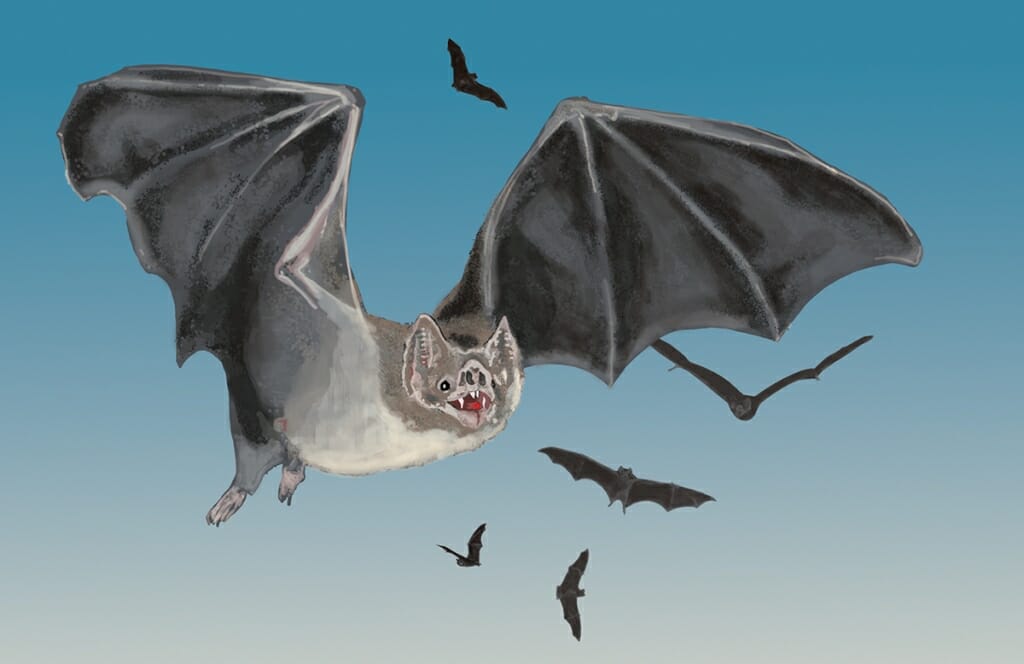
Amy Wray doesn’t expect everyone to love bats like she does, but she hopes to help people understand how essential they are to our ecosystem. Illustration by Danielle Lamberson Philipp / College of Agricultural and Life Sciences
Bats are flying throughout Amy Wray’s Twitter account. Her pinned tweet: “Live every week like it’s #batweek.”
What’s Bat Week? Wray, a doctoral candidate in wildlife ecology, is glad you asked. Observed (naturally) Oct. 24–31, Bat Week is an international celebration designed to raise awareness about the need for bat conservation. Wray just got back from the North American Society for Bat Research conference in Kalamazoo, Michigan. It’s a good time to hang (get it?) with fellow bat lovers — and also stock up on bat craft supplies.
“Especially stickers — you can’t have enough bat stickers,” Wray says.
She doesn’t expect everyone to love bats like she does, but Wray hopes to help people understand how essential they are to our ecosystem. What better time than Halloween?
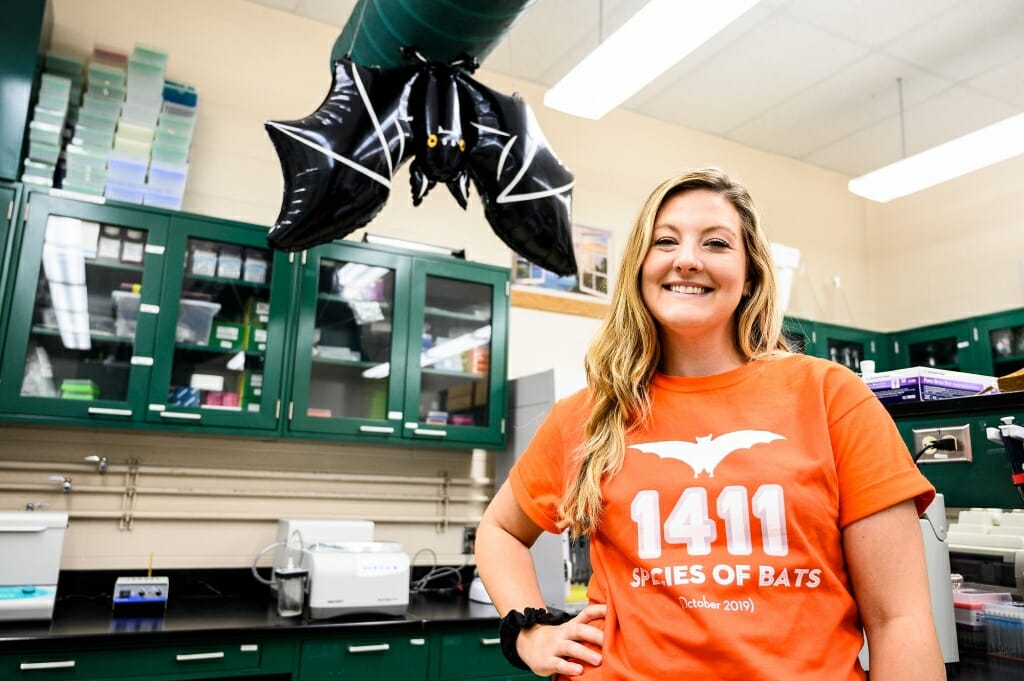
Bat expert Amy Wray, a doctoral candidate in wildlife ecology, in a research lab in Russell Laboratories. Photo: Jeff Miller
Clearly you love bats. Why?
Bats are fascinating creatures — they are the only flying mammal, they are super intelligent, and they are absolutely adorable. There are a lot of different kinds of bats too: white bats, speckly bats, cuddly bats, bats that catch fish, and even bats that hunt other bats. Sometimes we think of “bats” like they are all one type, when in reality, there are currently 1,411 different species.
When did this adoration begin?
When I was a little kid I was obsessed with the book “Is Your Mama a Llama?” and my favorite part of the story is about a bat, which had a very cute illustration. (Side note: The bat’s name is Dave.) And then, of course, “FernGully.”
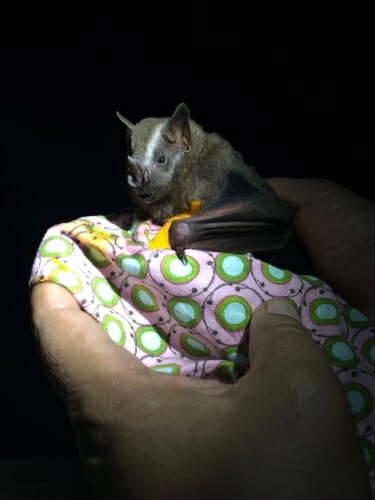
“Bats can totally see,” Wray says. “Some fruit-eating bats have very big, puppy-like eyes and they can see well even in the dark. Other bats use echolocation to create a highly accurate sound-based image of the world around them, but those guys can also see.”
Settle it once and for all: “blind as a bat” — true or false?
False! Bats can totally see. Some fruit-eating bats have very big, puppy-like eyes and they can see well even in the dark. Other bats use echolocation to create a highly accurate sound-based image of the world around them, but those guys can also see.
Be honest. Do they want … to suck … my blood?
No! There are only three bat species that are true “vampires” who actually feed on blood. These species also much prefer to snack on animals like cows. It’s also not fair to think that only bats are vampires — insects are much more likely to feed on human blood, and in terms of other blood-feeding animals, there are also birds like the vampire finch (although, vampire finches don’t really bite humans).
What’s the most ridiculous thing you’ve heard about bats?
A new one that I just heard is that if you throw a marshmallow in the air at night, bats will come and catch it. So far, there have been no verified reports of such behavior.
I think the worst myth about bats is the myth that many of them carry rabies. Like most mammals, bats can carry rabies, but it’s actually pretty rare. It’s not a good idea to ever touch a bat without gloves (partly to protect the bat from our germs, too), but by simply treating them (and other wildlife) respectfully there is little risk of contracting diseases from them.
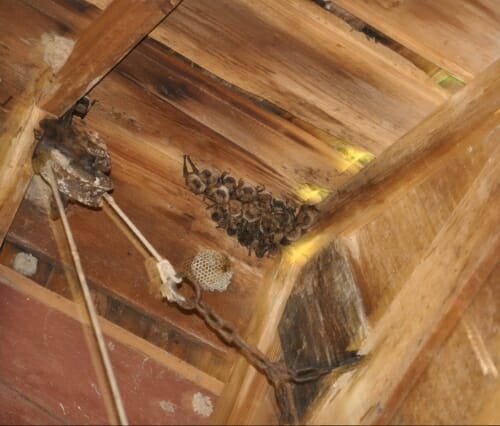
“One thing I really enjoy about bats is that they totally play hard to get,” Wray says. “Studying them has a lot of unique challenges since they are super wily, can be really small, and they’re kind of tricky to find or observe.”
Also, bats do not get stuck in people’s hair. I think this myth comes partly because sometimes if you are sitting outside where bats are foraging, they’re super curious and they may fly somewhat nearby to check out what you’re doing. They may also be foraging around insects that are trying to bite you. However, usually bats are not actually flying that close (it might seem like it because they’re flappy and hard to see). Bats are exceptionally agile, good fliers and they also have incredibly refined echolocation (like, they can “see” a single strand of a spider web or the pattern on a leaf), so they are definitely not going to fly into you.
Why do you think people are afraid?
I think fear usually stems from things that we don’t understand. Bats are kind of mysterious — flying around at night, hiding in small spaces, etc., so I think a lot of people hear myths and misinformation, but may be less likely to see bats up close. For a lot of people, an experience like having a bat stuck in their house, where the bat is going to be super afraid, is their only encounter with them. (If you do have a bat in your house, open a window and they can usually find their way out.) One thing that surprises people a lot is that up close, most bats (including all of the species in Wisconsin) are much smaller and more delicate than you might think they are.
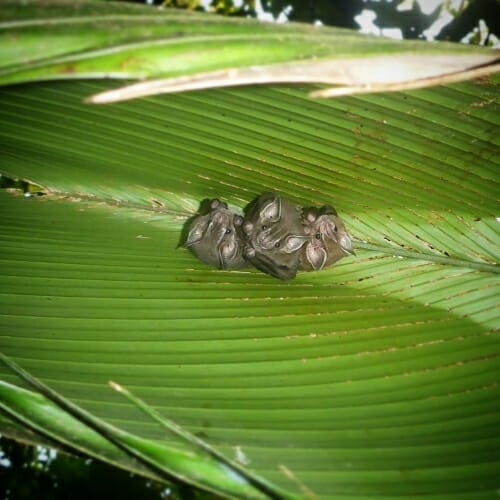
“One thing that surprises people a lot is that up close, most bats (including all of the species in Wisconsin) are much smaller and more delicate than you might think they are,” Wray says.
Are people always giving you bat-related gifts?
The best bat-related gift I ever get is from citizen scientists who send me bat guano and/or data for my research. But in terms of bat-related stuff, people have gotten me some really good gifts like a bat-shaped cookie cutter and some cute bat dog toys. One of my lab-mates also got me some fake eyelashes with bats on them, which I love.
You’re not alone in having a fondness for bats. What do you think bat lovers have in common?
There are a few common threads that I think attract people to bats. First, for anyone curious about the natural world, there are so many different bats that do really interesting things, and yet we have so much to learn about them still. There is a real need for more bat scientists and more people interested in helping them.
Bats also get an unfair reputation as being scary, so they’re great animals for anyone who loves an underdog story. One thing I really enjoy about bats is that they totally play hard to get. Studying them has a lot of unique challenges since they are super wily, can be really small, and they’re kind of tricky to find or observe. Bats are all around us, but we don’t necessarily see them all the time, so it also feels really special to have opportunities to see them up close or even just be around them.
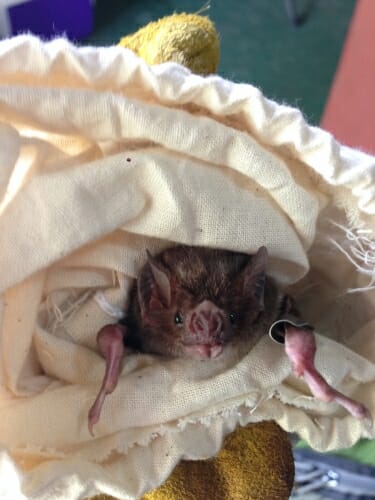
“Like a lot of wildlife, bats don’t really want to mess with people at all, they just want to keep on doing their own batty thing,” Wray says. “If we just leave them alone or handle them appropriately when necessary, there is no reason to be afraid of them.”
I’m sure it’s hard to choose, but do you have a favorite bat?
I have a few favorites, but one of them at the very top of my list is the proboscis bat (Rhynchonycteris naso). These bats are found in Central and South America, and they often roost on trees near the water, sitting in a neat little line, occasionally doing some wiggles. Their faces are outrageously cute in a super goofy way, where it looks like they kind of have an overbite, and it always makes me laugh to look at them.
Tell me again. Why shouldn’t I be afraid?
First step: google “baby flying fox,” then “bat eating banana,” and then “Honduran white bat.” These are the ultimate gateway bats. Like a lot of wildlife, bats don’t really want to mess with people at all, they just want to keep on doing their own batty thing. If we just leave them alone or handle them appropriately when necessary, there is no reason to be afraid of them. Bats also play really important roles in the ecosystem, and a lot of them need our help.
You’ve said a world without bats would be frightening. Why?
Bats are super important for the ecosystem. They do a lot of important things like pollinating plants, promoting forest diversity by dispersing seeds, and controlling insect pests that threaten agricultural systems. There are also so many mysteries about bats that are yet to be discovered, and I think it’s absolutely tragic to lose species before we can even learn about them.

Wray conducts a test with a sample vial of bat guano. Wray is using next-generation DNA sequencing to study the diets of insect-eating bats in Wisconsin. The findings will help her assess the extent to which bats feed on agricultural pests and how the spread of diseases may impact the utility of bats in pest control. Photo: Jeff Miller
